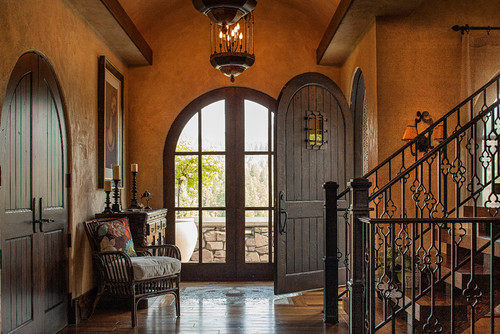Homeowners across the country are sitting on a record amount of home equity.
Home equity refers to the difference between the current value of a home and how much is still owed on the mortgage. Therefore, if you have a house worth $400,000 and you’ve paid $100,000 toward your mortgage, your equity is equal to 25%.
As a share of total real estate value in the country, home equity has risen along with home prices to currently hover at 70.5%—its highest level since 1984. To put that number in perspective, 10 years ago, in 2012, home equity hovered at just 46%.
“For over a decade, home prices have climbed consistently, with an acceleration to a double-digit pace over the most recent two years,” notes Realtor.com® Chief Economist Danielle Hale. This, in turn, has helped push the total value of owner-occupied real estate in the United States to a new high of $41.2 trillion.
So, with homeowners sitting on a healthy amount of home equity, is now a good time to tap into that wealth?
It’s a reasonable question, particularly if you’re worried about inflation, a looming recession, job loss, or one of many economic uncertainties dogging Americans today. Currently, consumer debt is $320 billion higher than a year ago, and combined with tumbling mutual funds and stock market holdings ($4.2 trillion lower than last year), people may need some extra cash.
“Tapping home equity, which is generally available at lower rates of interest than personal loans or other types of lending, can make sense to fund investments such as home improvement, education, or starting a business,” says Hale. “But it’s important to remember that these loans will need to be paid back, either with proceeds from the sale of the home or with other funds if you want to continue living there.”
While it’s oh, so tempting to unlock that capital, just remember you’re not only increasing your debt load, but you’re also reducing the equity you’ve built. Nonetheless, there are smart ways to go about using that money, and smart reasons to do so as well.
“It’s always a good time [to tap into equity] if it is to reduce other debt or pay for improvements,” says Rocke Andrews, mortgage broker and owner of Lending Arizona in Tucson.
“With the short-term rates going up due to the actions of the [Federal Reserve], your other consumer debt may be going up quickly also: the cost of car loans, of credit card interest. So don’t lose sight of the savings that you can get,” adds Andrews. “Just the psychological relief of not having to worry about paying those bills every month is well worth it.”
That said, skyrocketing interest rates are not only boosting the borrowing costs on mortgages, but raising rates across the board for home equity options, too. This is prompting changes in the way that homeowners are choosing to tap into the real estate capital they’ve amassed over the years.
So here’s a guide to some of the new rules on tapping home equity today.

Ways to tap into home equity—plus, the pros and cons
If you are thinking of pulling money out of your house, there are three options most homeowners turn to.
Cash-out refinance
A cash-out refinance involves refinancing your existing mortgage for more than what you originally owed on the house and taking the difference in cash. True to its name, you are “cashing out” some of the equity in your home in order to get the larger mortgage.
For example, say you had a $300,000 loan, on which you still owe $200,000. That would mean you have $100,000 in equity in your house. Maybe you want to pay down some credit cards or college tuition, so you cash out $25,000 of that equity and get a new mortgage for $225,000.
If your property has risen in value (as most do over time), this also increases home equity. Let’s say your home’s value has risen from $300,000 to $325,000 since you bought it. If, as in the previous example, you owe $200,000 on that loan, you could cash out $25,000 but essentially still keep the same mortgage payment on $200,000 while pocketing $25,000.
The interest rate on a cash-out refinance is fixed, making monthly payments easier to factor into the budget.
Cash-out refinances are a good option for homeowners who want only one mortgage to keep track of and pay off, and also for those who may not have a great credit score. Because they are federally backed by Fannie Mae, Freddie Mac, the Federal Housing Administration, and Veterans Affairs, refinances have less stringent credit score requirements and underwriting than other methods of borrowing against your house.
The process for a cash-out refinance is similar to refinancing a mortgage, but homeowners usually end up paying more in interest after a cash-out refinance over the long term, because they’re increasing not only the amount but also the length of their loan. (For example, if you were already 10 years into a 30-year loan, refinancing for another 30 years means you’ll be paying for 10 years longer than had you kept your original mortgage.) And like a typical mortgage process, they will be paying closing costs, which is typically anywhere between 3% to 5% of the new loan amount.
A year ago, cash-out refinances made up a majority of equity withdrawals thanks to record-low mortgage rates. But with the average rate on a 30-year fixed mortgage topping 7% in October, which is pushing all rates up with it, a cash-out refinance makes less sense today.
“As interest rates climb, a cash-out refinance—which resets the rate on the total outstanding loan balance—makes less financial sense for many households,” Hale says. “Instead, households are more likely to use home equity loans or lines of credit, which enable them to tap only a limited amount of equity at today’s mortgage rates, keeping the rest of their mortgage debt at their current presumably lower rate.”
According to the August 2022 Housing Finance Policy Center’s Chartbook, “Higher rates this year have also forced a sharp cutback in cash-out refinances, which had soared in the last two years as some homebuyers used the refinance opportunity to extract equity.”
“Rising mortgage rates have served a body blow to overall refinance activity in 2022,” says Nik Shah, CEO of Home.LLC. “Cash-out refinance activity has dropped significantly in response. Cash-out refinance volume in the second quarter of 2022 is down by an estimated 44% from a year ago.”
Home equity loan
Similar to a cash-out refinance, a home equity loan allows you to borrow against the equity in your home. The biggest difference is that while a cash-out refinance replaces your existing mortgage with a new one, a home equity loan involves taking out a second loan on top of your first.
The interest rate and payments on a home equity loan are fixed, meaning the rate doesn’t change and homeowners will be taking on a steady loan payment each month.
Most mortgage lenders will allow homeowners to borrow up to 80% of their home equity in the form of a home equity loan. For example, if your home is worth $400,000 and your mortgage balance is $200,000, you have 50% equity in your property and would be able to borrow up to $120,000. (You can crunch your own numbers with an online home equity loan calculator.)
Home equity loans tend to have higher credit score requirements and more stringent underwriting compared with a cash-out refinance. But they’re a good option for homeowners who don’t want to touch the great rate on their first mortgage.
“If your current mortgage rate is low, you don’t have to give that up [with a home equity loan],” says Joe DeMarkey, strategic business development leader with Reverse Mortgage Funding in Holliston, MA. “And if you use the loan for home improvements or renovation, the interest may be deductible.”
One thing to keep in mind is that with a fixed-rate loan like a home equity loan, you will pay interest on the entire loan amount—even if you’re using it incrementally, such as for home renovation.
And if you do end up selling your house, the balance on the home equity loan will be due in full.
Home equity line of credit (HELOC)
Similar to a home equity loan, a home equity line of credit (also known as a HELOC) allows homeowners to borrow money and essentially open up a line of credit using the equity in their home as collateral.
The biggest difference between a HELOC and a home equity loan and a cash-out refinance is that a HELOC acts like a credit card. Once approved, homeowners can borrow on an as-needed based, up to the loan’s limit, over and over again through the term of the loan (typically five to 20 years).
Most mortgage lenders will allow homeowners to borrow up to 75% to 85% of a home’s value, minus what they still owe. For example, if your home has been appraised at $500,000 and you still owe $200,000 on the mortgage, the bank will calculate 75% of the value ($375,000 in this case) and then subtract $200,000 (the amount you still owe). They would then set up a HELOC with a $175,000 limit that you can borrow against over time.
Homeowners pay interest only on the amount they borrow over the life of the loan. So if they borrow only $5,000 of their $35,000 credit limit, they pay interest on only $5,000.
The benefit of a HELOC is the flexibility of opening what is essentially a revolving line of credit, which is great for those who aren’t sure how much money they need to borrow, or when they’ll even need to use it. For instance, if you’re planning a home remodel and the project is expected to take six to eight months, you can open a home equity line of credit and pay the contractor over the course of the project, as bills come due.
They’re a great “rainy day fund you can tap into,” says Amit Gandhi, an independent loan originator and financial adviser in the Dallas-Fort Worth Metro area, who is an advocate of taking out a HELOC before you need one because there is no way to predict what the real estate market will do tomorrow.
“It’s the cheapest form of credit that you’ll ever have aside from a 0% credit card,” adds Gandhi.
Brad Cahoone, mortgage broker, banker, and president of Global Home Finance in Lewisville, TX, says a HELOC is good for someone who needs a large amount of money right away (they take as little as two weeks to obtain), and they want to be able to use the line of credit over and over again without having to go through the mortgage process repeatedly.
The other benefit of a HELOC: Because they’re a bank product, they don’t include the closing costs associated with refinancing or a home equity loan.
The big downside of a HELOC is that the interest rate is not fixed and may adjust (and go up) over time.
“With a HELOC, your rate can keep going up every month or every time the Federal Reserve raises rates. Your rates are not locked in,” warns Andrews, of Lending Arizona. For this reason, Andrews is an advocate of a home equity loan over a home equity line of credit due to the fixed interest rate. That said, if you need the money fast and/or aren’t sure how much you’ll need over time, a HELOC trumps a home equity loan in terms of speed and flexibility.
Although home equity loans and HELOCs each come with their unique pros and cons, both are increasingly popular options today, particularly compared with cash-out refinances.

Mistakes to avoid when tapping into home equity
The No. 1 advice right now: If you’re even considering tapping into your home equity in the next year or two, do it now before the rates go up even further—or before home prices start to come down, even slightly.
“You don’t know what the real estate market is going to be tomorrow,” Gandhi says. “With home prices, we’ve seen them plateau in the last two months, and in some markets, they’ve declined steadily. Nothing to be frantic about, but houses are sitting on the market longer now. What’s that going to do to home values? It’s going to start pulling back a little bit. It’s not going to be worth as much as it was last year.”
He notes that homeowners considering tapping into home equity ideally should catch it at the peak of home values.
Perhaps what’s more important is to consider what you’re using the money for in the first place. Using it to pay for home improvement, investments, college tuition, and higher-interest debt all make sense. Using a home equity loan to buy a boat? Might not be the smartest move.
“The mistakes that people make today versus decades ago is they are cashing out equity for things that may not bring value,” says Eric Jeanette, president of Dream Home Financing in Freehold, NJ. “Using your home like a piggy bank to buy a [new] car is not a smart financial decision, but consumers are doing more of this than in the past.”
If, however, the goal is to pay off higher-interest credit cards or other debt, then tapping into equity and taking out a loan or line of credit definitely makes sense, says Ralph DiBugnara, mortgage banker, real estate investor, and president of Home Qualified in New York City.
“People are so stuck on these lower mortgage rates that they don’t want to touch their first mortgage,” he says. But this doesn’t make sense if “they’re paying credit cards at 16%. We have to be smart and consider if a cash-out refi makes sense to pay off the higher-interest credit card.”
If you are considering tapping into home equity in today’s market with rising interest rates, two of the most important things you can do as a homeowner is to compare lenders and see where you can get the best terms and rates. And with a recession looming on the horizon, it’s smart not to overextend yourself financially.
“It’s important to only borrow as much as you will actually use, so that you don’t end up paying more in interest than necessary,” says Josh Craven, mortgage adviser and CEO of SprintFunding.com in Bonsall, CA.
Hale agrees, adding, “Increasingly, homeowners are choosing to tap smaller amounts of equity so that they can keep balances at lower [levels].”
For this and related articles, please visit Realtor.com


















